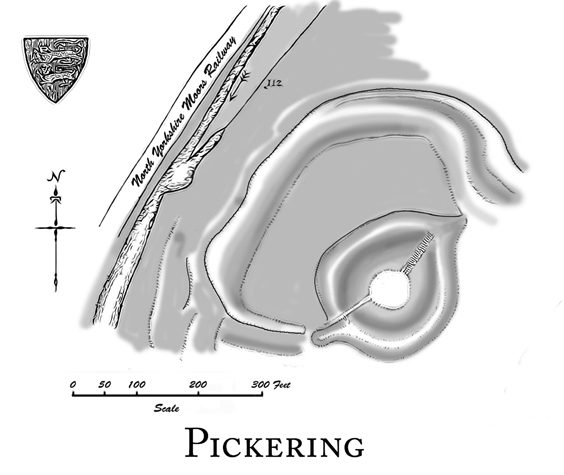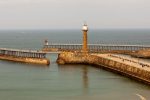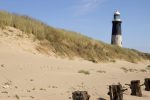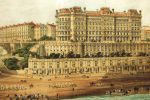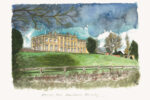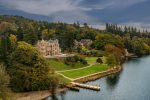Pickering Castle – History of one of Yorkshire’s Secret Castles
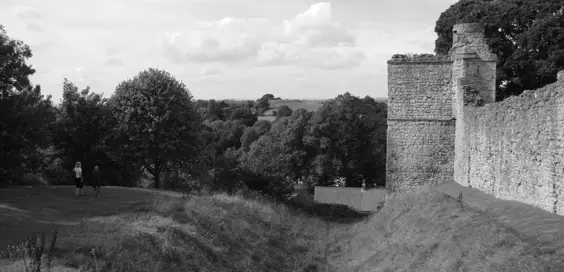
By Paul C. Levitt
The ancient and pleasant market town of Pickering lies at the intersection of two ancient routes: one (north and south) linking the castles of Foss, Cropton and Malton, and the other (east to west) linking Helmsley, Brompton and Scarborough fortresses.
Nestled on the southern edge of the North York Moors some 27 miles northeast of York, the town is a popular destination for visitors to the moors, especially those who love steam railways. The single branch line of the North Yorkshire Moors Railway, on which steam railway enthusiasts can still travel back as well as forward in time, follows the course of Pickering Beck to Grosmont.
With the impressive ruins of Pickering Castle as a backdrop, few visitors will fail to notice this splendid stone edifice, which was developed in masonry in the late twelfth century. However, many will perhaps fail to notice or realise the significance of a distant hill on the opposite bank of the Beck.
“Extensive view”
L’Anson was undecided as to whether the motte on top of Beacon Hill represented the original stronghold erected by the Conqueror, or merely represented the site of a siege castle. In fact, little is known about the history of this earthwork situated in a quiet backwater to the west of the town centre. Beacon Hill overlooks what is effectively the extreme southern end of Newton Dale, a gorge through which melt water flooded down to form a huge lake at the end of the last Ice Age.
Pickering Castle, on the opposite bank, is hardly a ‘secret castle’, but nevertheless one that was originally built of earth and timber. Attributed to the Conqueror and commanding an equally extensive view as Beacon Hill opposite, the fortress at Pickering originally comprised a motte and inner bailey. L’Anson considered it a fine example of the gradual evolution of an early Norman earth and timber stronghold into a shell-keep fortress.
“Converted the stronghold”
In 1154 a strong palisade would have stood where the present curtain wall stands. The motte, which would also have been crowned by a strong palisade, had a timber keep before masonry was introduced between 1182 and 1186. ‘Henry II appears to have converted the stronghold into a stone castle by erecting a wall around the original bailey, and it seems very probable that he, at the same time, added the outer or southern bailey, which he would defend with timber palisading,’ suggested l’Anson. ‘The masonry of the outer bailey was not erected until the reign of Edward II, during which time the shell keep would also have been erected.’
Edward II was murdered in 1327 at the age of 43 and did indeed undertake major building work in the years immediately before his death.
The castle was in royal hands until 1267 when it passed (along with the title earl of Lancaster) to Edmund Crouchback, the younger son of Henry III. Edmund’s son Thomas succeeded him, but in 1296 his estates reverted to the king until 1326 when his younger brother Henry was awarded his brother’s titles and estates. In 1352 the castle became part of the Duchy of Lancaster, which in 1413 reverted to the Crown.
Taken from ‘Yorkshire’s Secret Castles: A Concise Guide & Companion’ by Paul C. Levitt, published by Pen & Sword History, £12.99
